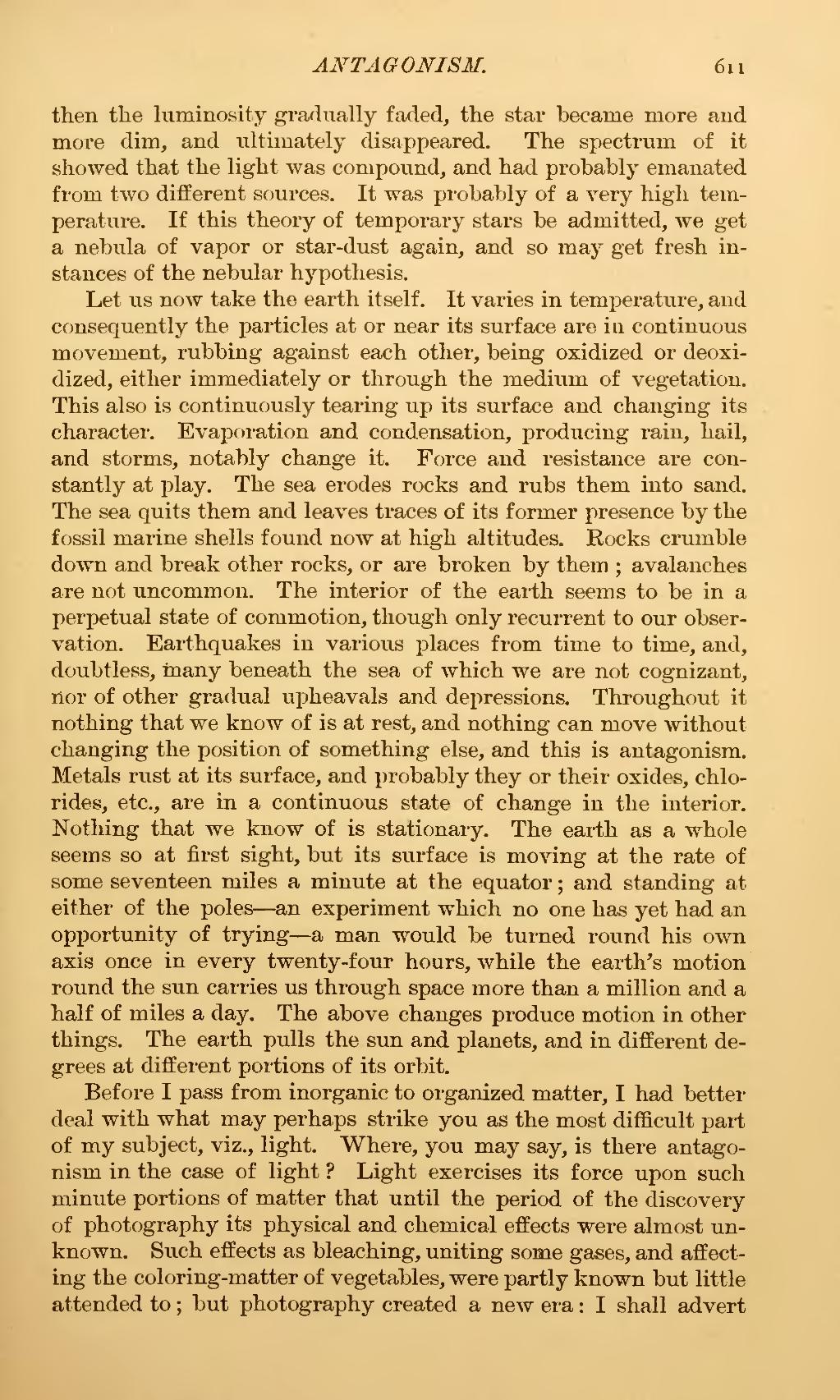then the luminosity gradually faded, the star became more and more dim, and ultimately disappeared. The spectrum of it showed that the light was compound, and had probably emanated from two different sources. It was probably of a very high temperature. If this theory of temporary stars be admitted, we get a nebula of vapor or star-dust again, and so may get fresh instances of the nebular hypothesis.
Let us now take the earth itself. It varies in temperature, and consequently the particles at or near its surface are in continuous movement, rubbing against each other, being oxidized or deoxidized, either immediately or through the medium of vegetation. This also is continuously tearing up its surface and changing its character. Evaporation and condensation, producing rain, hail, and storms, notably change it. Force and resistance are constantly at play. The sea erodes rocks and rubs them into sand. The sea quits them and leaves traces of its former presence by the fossil marine shells found now at high altitudes. Rocks crumble down and break other rocks, or are broken by them; avalanches are not uncommon. The interior of the earth seems to be in a perpetual state of commotion, though only recurrent to our observation. Earthquakes in various places from time to time, and, doubtless, many beneath the sea of which we are not cognizant, nor of other gradual upheavals and depressions. Throughout it nothing that we know of is at rest, and nothing can move without changing the position of something else, and this is antagonism. Metals rust at its surface, and probably they or their oxides, chlorides, etc., are in a continuous state of change in the interior. Nothing that we know of is stationary. The earth as a whole seems so at first sight, but its surface is moving at the rate of some seventeen miles a minute at the equator; and standing at either of the poles—an experiment which no one has yet had an opportunity of trying—a man would be turned round his own axis once in every twenty-four hours, while the earth's motion round the sun carries us through space more than a million and a half of miles a day. The above changes produce motion in other things. The earth pulls the sun and planets, and in different degrees at different portions of its orbit.
Before I pass from inorganic to organized matter, I had better deal with what may perhaps strike you as the most difficult part of my subject, viz., light. Where, you may say, is there antagonism in the case of light? Light exercises its force upon such minute portions of matter that until the period of the discovery of photography its physical and chemical effects were almost unknown. Such effects as bleaching, uniting some gases, and affecting the coloring-matter of vegetables, were partly known but little attended to; but photography created a new era: I shall advert
